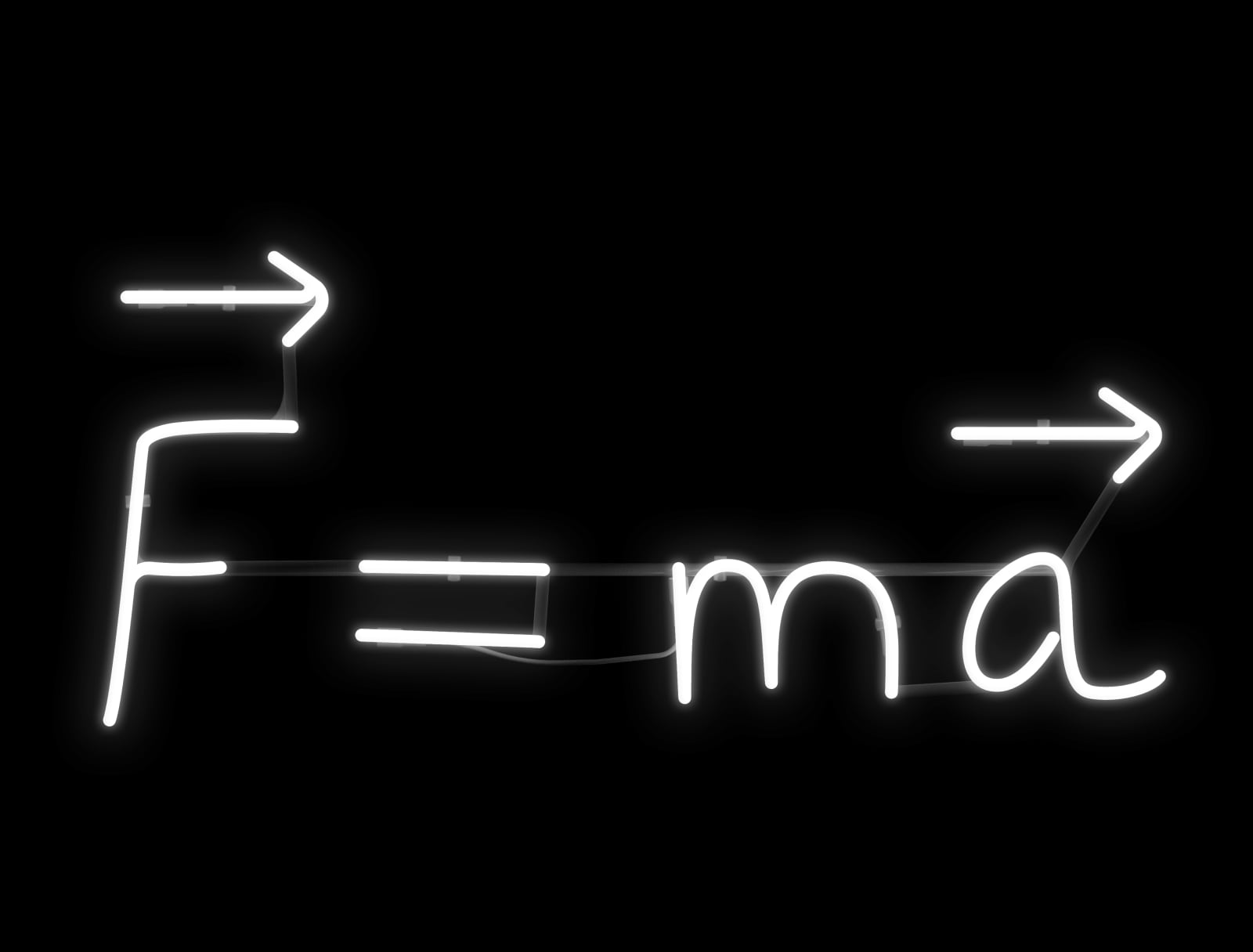Andrea Galvani Italy, b. 1973
Newton's Second Law of Motion, 2019
6500K neon, white blown glass, metal structure
29 x 65 x 7 cm
Edition of 3
In 1686, Newton published Principia Mathematica Philosophiae Naturalis, a work of true genius that changed the notion of science forever. Here he introduced his three groundbreaking laws of motion, the...
In 1686, Newton published Principia Mathematica Philosophiae Naturalis, a work of true genius that changed the notion of science forever. Here he introduced his three groundbreaking laws of motion, the first to define and describe motion in precise mathematical terms through three equations. Newton’s dynamical equations describe the motion of a body with mass m under the influence of a force F. Their application is vast because F can describe any force, allowing us to calculate the motion of countless interesting objects and systems: from planets to pendulums, buildings, bridges, bicycles, and so much more. His second, most celebrated equation is the inspiration for Andrea Galvani’s neon sculpture.
Newton’s Second Law of Motion describes motion in terms of the force exerted on a body. If we apply a force F, this causes an acceleration a in the same direction of the force. It’s like the 1+1=2 of classical mechanics: in straightforward language, it seems to say “push something and it moves.” It may appear simple, but if we look closely, F=ma is very mysterious. It implies that if no force is exerted, there will be no change in velocity, and momentum (sometimes called “the amount of motion”) will remain constant. The idea that motion would persist in the absence of forces was radical at the time. It seems incompatible with the world we know, where we have to continuously exert force upon something in order to keep it moving at the same speed (we had to wait another couple hundred years for Einstein to discover the interchangeability of mass and energy described by E=mc2). F=ma disclosed a rather disturbing, counter- intuitive thought that conflicted with Aristotle’s teachings, which formed the widely accepted view for thousands of years. To arrive at this equation, human beings had to learn how to look at motion in new ways—to see the different aspects of it, and to change how we thought about what we saw. Galvani’s neon illuminates Newton’s profound insight: motion is not an action but a state.
Newton’s Second Law of Motion describes motion in terms of the force exerted on a body. If we apply a force F, this causes an acceleration a in the same direction of the force. It’s like the 1+1=2 of classical mechanics: in straightforward language, it seems to say “push something and it moves.” It may appear simple, but if we look closely, F=ma is very mysterious. It implies that if no force is exerted, there will be no change in velocity, and momentum (sometimes called “the amount of motion”) will remain constant. The idea that motion would persist in the absence of forces was radical at the time. It seems incompatible with the world we know, where we have to continuously exert force upon something in order to keep it moving at the same speed (we had to wait another couple hundred years for Einstein to discover the interchangeability of mass and energy described by E=mc2). F=ma disclosed a rather disturbing, counter- intuitive thought that conflicted with Aristotle’s teachings, which formed the widely accepted view for thousands of years. To arrive at this equation, human beings had to learn how to look at motion in new ways—to see the different aspects of it, and to change how we thought about what we saw. Galvani’s neon illuminates Newton’s profound insight: motion is not an action but a state.
Join our mailing list
* denotes required fields
We will process the personal data you have supplied in accordance with our privacy policy (available on request). You can unsubscribe or change your preferences at any time by clicking the link in our emails.
